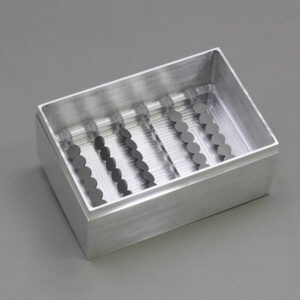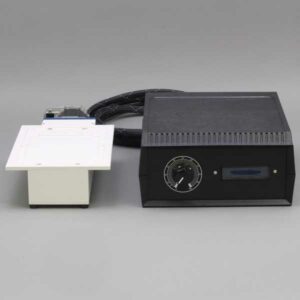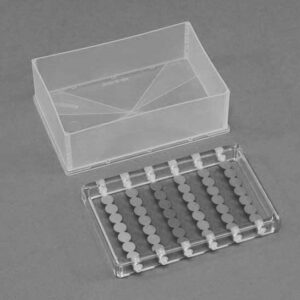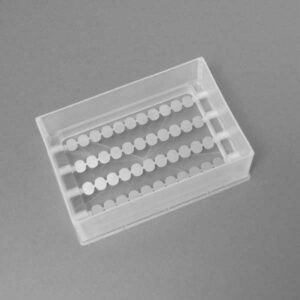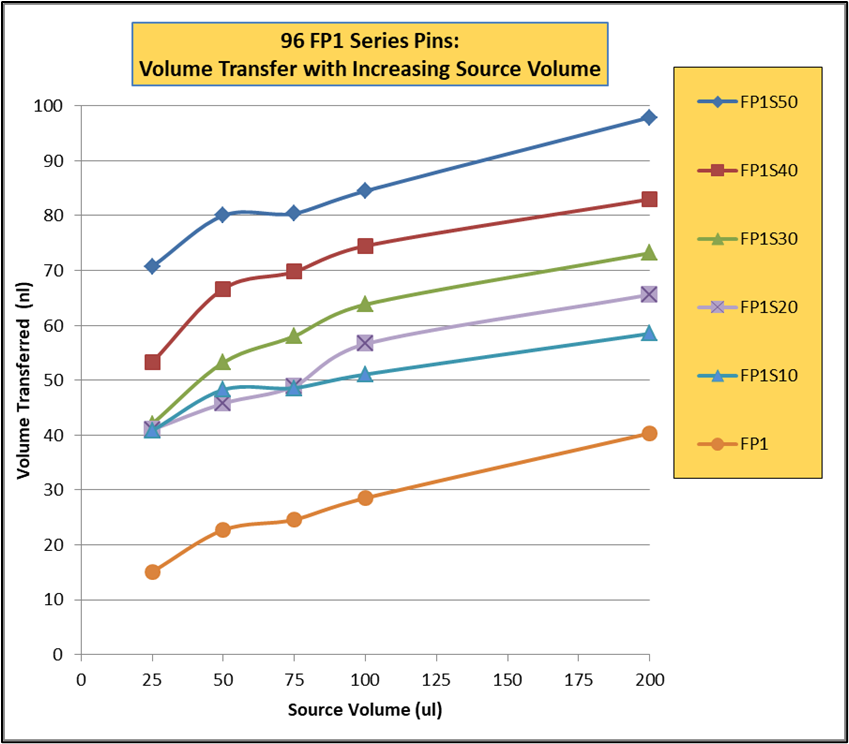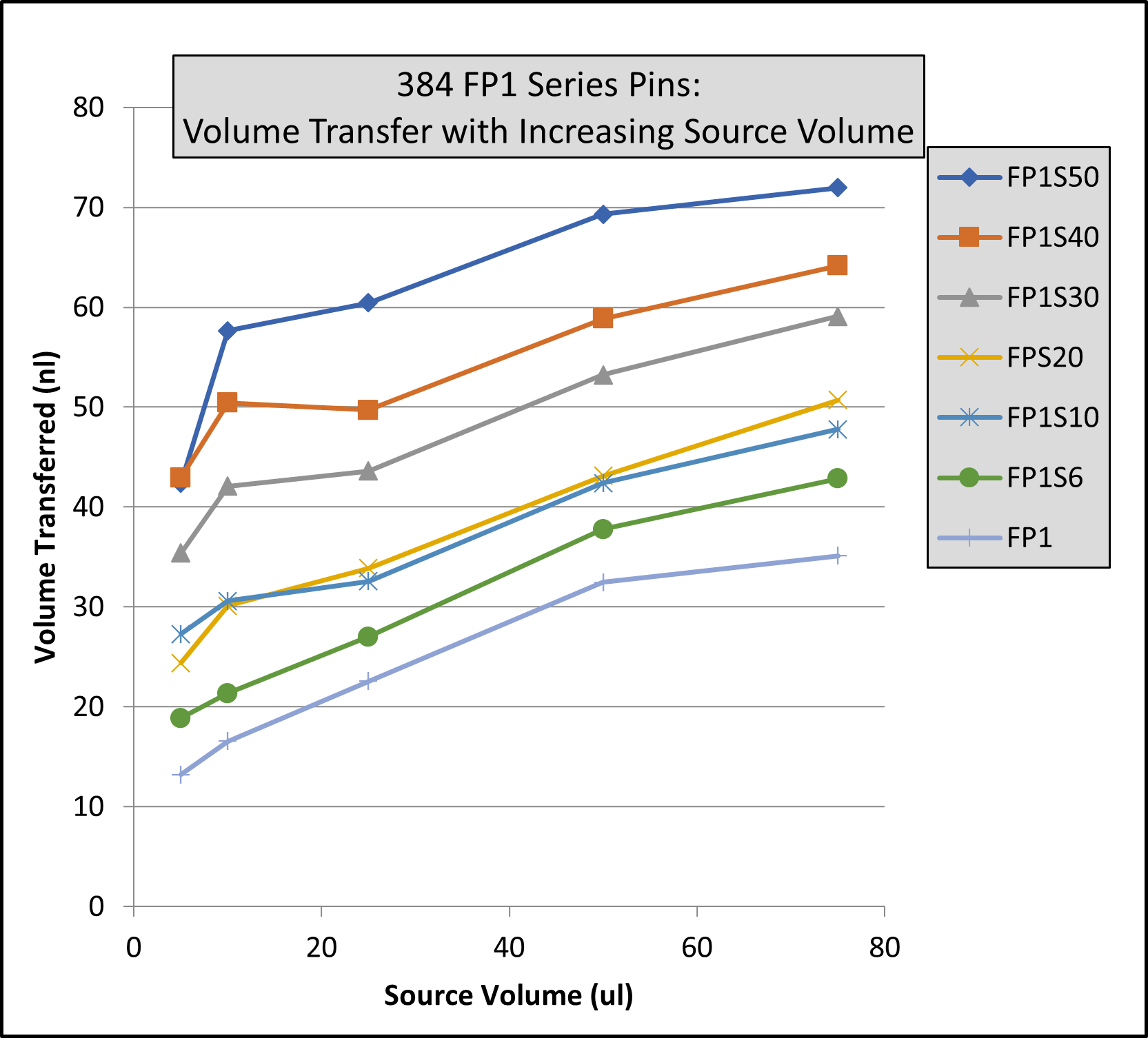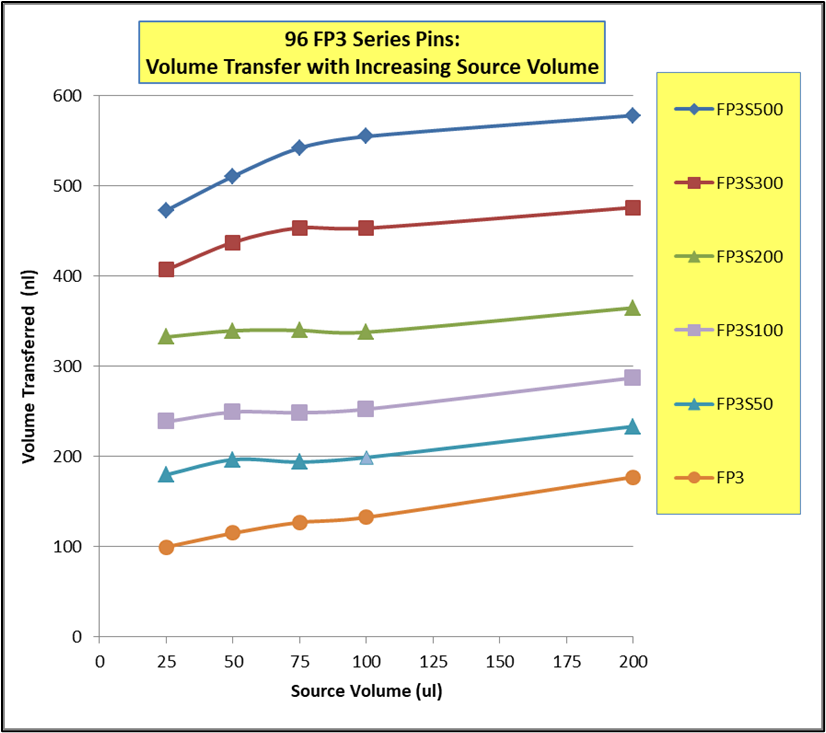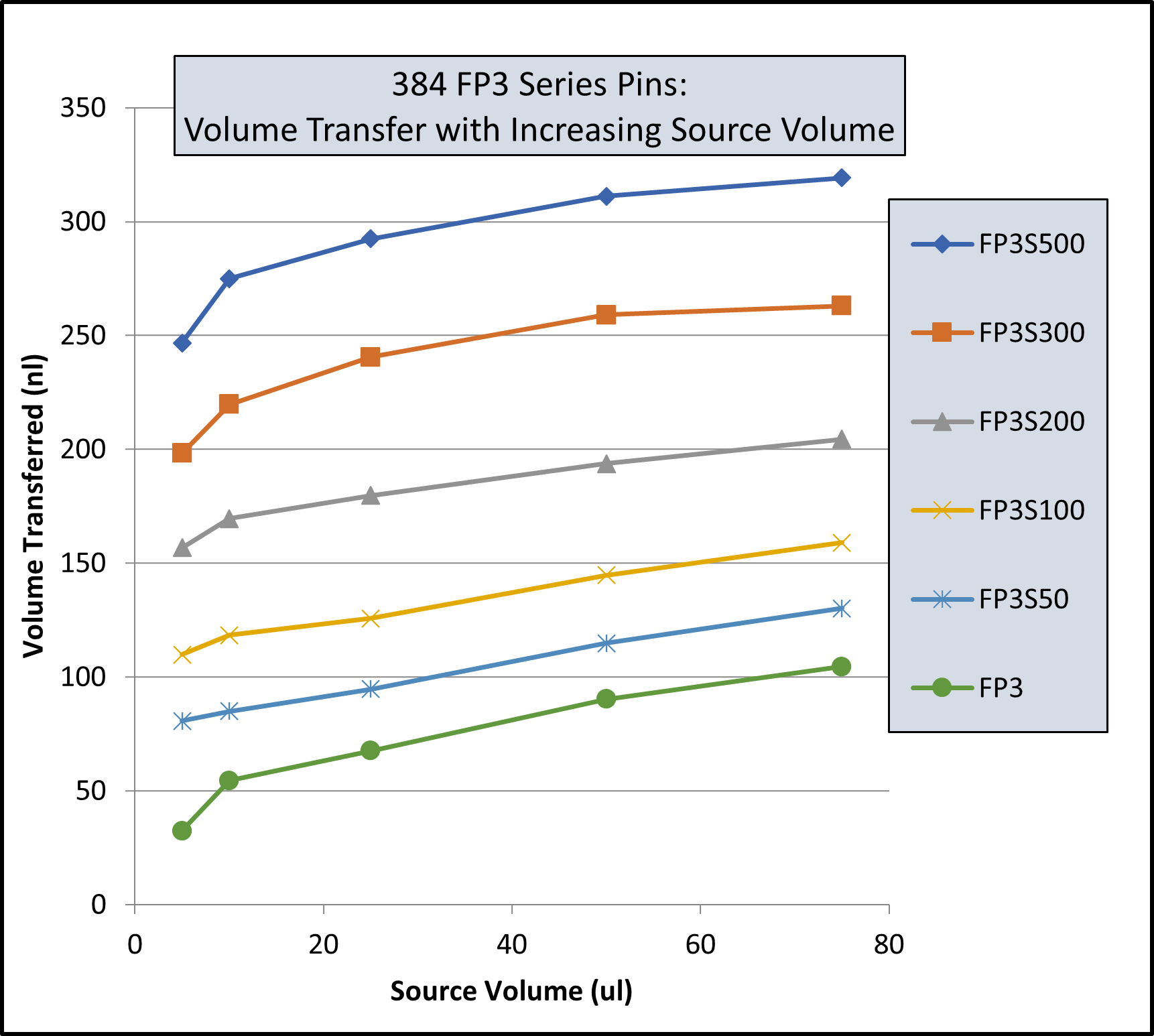BUBBLE PADDLE RESERVOIR, Tumble Powered, 96 Channel, Aluminum, Hydrophilic Coated, Flat Bottom Reservoir, Holds Either VP 750-ECON-6AP Polycarbonate Bubble Paddle Frame (6 Bubble Paddles, Parylene Coated, 7 Bubbles/Paddle With PTFE Bearings) or VP 750-ECON-6P Frame (4 Bubble Paddles, Parylene Coated, 11 Bubbles/Paddle With PTFE Bearings), Mixes 280mL, SLAS Footprint, 127.7mm Length, 85.5mm Width, 50mm Height
Particulate Tumble Stirrer Suspension Systems in Reservoirs – Many Choices
V&P has developed over 30 different reservoir suspension systems for pipetting uniformly suspended beads, cells, particles, and resins into microplates of nearly every description. We have refined, perfected, and consolidated that list down to the best 22. These reservoir suspension systems are powered by one of our 15 different Vertical Tumble Stirrers.
Uniformity of Suspension and Low Dead Volumes
Keeping magnetic beads, assay beads, SPA beads, glass beads, resins other particulates, and cells in homogeneous suspension while they are being pipetted to microplate wells is very important if reproducible results are to be obtained. It is also important to do this with the smallest dead volume possible when the reagents are very expensive. Although one might think you cannot use magnets to stir and suspend magnetic beads, V&P has found a way to uniformly suspend magnetic beads with our parylene-coated suspension systems and Magnetic Vertical Tumble Stirrers.
The unique V&P Scientific Bubble Paddle Reservoir suspension systems (US Patent #6,461,034 & European Union Patent #1,314,471) provide a very simple and inexpensive way of accomplishing this goal. Whether you are using a 4, 8, 16, 24, 96, or 384 pipetting head, there is a suspension reservoir with a bubble spacing that allows a pipette tip to be inserted in the gap between bubbles. The unique contours machined into the reservoir coupled with the contours of the Bubble Paddle design results in very vigorous stirring and homogeneous suspension of the particulate contents in the reservoir. The unique feature of the Bubble Paddle Reservoirs is their exclusive design that eliminates “fall out zones” where particulates fall out of solution that is so prevalent with other mixing reservoirs. Also if dead volume is not an issue in your assay you can use our economical VP 756B-4PPP suspension reservoir powered by a VP 710D3 Tumble Stirrer in conjunction with a 4, 8, or 16 pipette head for a low-cost reservoir suspension system.
Match the Particulate and Application to the Appropriate Suspension Reservoir System
There are many characteristics of your material that will affect where and how they are suspended:
- Size of the material – is it larger than the paddle/reservoir contour gap
- Density of the material
- Fragility of the material
- Speed at which it can be stirred without breakage
- Temperature sensitivity of the material
- Light sensitivity of the material
- Does the reservoir need to be continuously fed?
All of the features above are very important; choose your suspension system wisely before you launch a new assay protocol. We have dealt with it all in the last 30 years. With our large selection of Suspension Reservoirs Systems, we can help you make the best decision for your application. We are happy to share our knowledge with you.
Keeping Magnetic Beads in Suspension with Magnetism
We discovered that by using parylene-coated bubble paddles with Vertical Tumble Stirrers, we could easily keep magnetic beads in uniform suspension and the magnetic beads would not remain attracted to the parylene-coated bubble paddles, or stay on the bottom of the reservoir once the paddles begin to move. This greatly expands the number of systems possible for a magnetic bead application, furthermore, it simplifies and reduces the cost of the magnetic bead suspension systems:
If economy and uniformity of suspension are important to you, we have solutions for you.
Advantages of V&P Scientific’s Tumble Stirrer Suspension Reservoir Systems
V&P’s patented contours in the bottom of the reservoir which match the contours of the Bubble Paddles produce a vigorous upwelling current in the reservoirs to keep particulates in uniform suspension.
- The Bubble Paddles are contoured so pipette tips will fit in the gaps between the bubbles and not interfere with spinning bubble paddles
- V&P’s patented contours in the bottom design also eliminate “fall out zones” where particulates settle out in other mixing reservoirs
- Designed to fit on robot deck features to facilitate precise x and y matching to the robot pipetting system
- Designed to be taken off the deck and replaced in the exact same position
- Greatest variety of Suspension Reservoirs Systems for 1, 4, 8, 12, 16, 24, 96, and 384 pipettors
- Multiple versions of Suspension Reservoirs Systems for different volumes and applications
- Available in chemical resistant materials (PTFE, Delrin, Polypropylene)
- Available in light blocking materials (Black Delrin, Aluminum)
- Available in autoclavable or chemically sterilizable materials
- Available in Aluminum versions for heating or chilling the contents of the reservoir
- Low dead volume designs to conserve expensive reagents
- Available in Hydrophilic coatings to reduce dead volume loss, prevents droplet formation, and reduces air bubble formation in crevices
- Available in versions to suspend particulates in multiple unique reservoirs simultaneously
- Capable of continuous refilling for long run times
- Capable of mixing even solutions as viscous as honey (15,000 centistokes)
- Custom Suspension Reservoir Systems are not a problem
- Flexibility is our specialty
Accessories
See Vertical Tumble Stirrers that power our Suspension Reservoir Systems.
See our other accessories for Suspension Reservoirs.
V&P Scientific’s Hydrophilic Coating
Our Hydrophilic coating is a very hard, abrasion resistant, and chemical resistant surface for metals and ceramics. It resists all acids except hydrofluoric, all bases, and all polar and non-polar solvents. It exhibits good thermal conductivity from lattice phonon conduction from its strong bonding and because it is comprised of comparatively light atomic species. It also is a high dielectric surface from the lack of conduction of free electrons across a large electronic bandgap. The effective coating on metals for corrosion resistance is nearly transparent and thin, in the range of 750 to 1200 Angstroms. Effective coatings for abrasion resistance are deeper, in the range of 1500-2000 Angstroms, and tend to be more opaque. The maximum service temperature in an oxidizing atmosphere is 120°C and will offer protection in a reducing or an inert atmosphere to 201°C. The coating is applied in an environmentally benign process, and potentially damaging plasma energy is not utilized. It is an FDA-approved material for full-food contact, surgical instruments, and for surgical implantation. It is can be autoclaved and may be chemically sterilized.
Advantages of Hydrophilic Coated Reservoirs
The hydrophilic coating on our aluminum reservoirs maximizes the recovery of the reagents used in them. The hydrophilic coating prevents droplet formation and causes the reagent to collect in the dimpled area. We also facilitate this collection of reagent in the dimples by bringing the walls into the dimpled area and then rounding that corner to prevent loss of liquid in the corner. The Polypropylene, Delrin, and PTFE reservoirs described above all are hydrophobic and leave droplets of reagents in the flat areas and in the corners and therefore have larger “dead volumes”.
Another advantage of the aluminum reservoirs with control wells is that we can make the separating walls thinner with aluminum than with the plastics (Polypropylene, Delrin, and PTFE) 0.7 mm thick versus 1.3 mm thick, thus eliminating potential problems with some brands of pipet tips hanging up on the separating walls when they near the bottom of the reservoir.
A third advantage of the hydrophilic coated aluminum reservoirs is that air bubbles are not trapped in the dimples at the bottom. Just pour a little reagent in, swirl and the dimples fill with your liquid, and the air is not trapped in the dimple. This is not the case with Polypropylene, Delrin, and PTFE where the air in the dimples has to be removed (dislodged by pipet tip) or by centrifugation.
Our hydrophilic coating is not affected by 30% H2O2, salt, all acids except hydrofluoric acid, all bases, all polar and non-polar solvents, and potassium ferrocyanide. It also can be autoclaved and chemically sterilized.

